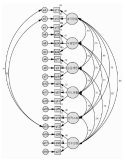
This study was to explore and confirm factors of sport psychology counseling needs in Korean elite coaches. In order to achieve this purpose, 56 elite coaches in Korean Olympic training center at Taereung and Jincheon responded on open-questionnaire and 260 coaches responded on survey. Open-ended questionnaire responses were analyzed by inductive content analysis and collected survey data were analyzed by exploratory factor analysis and confirmatory analysis. The results were as follows: Firstly, sport psychology counseling needs of elite coaches were competition preparation, negative athlete-coach relationship, athlete private problems, performance degradation, pressure on performance result, injury management, team cohesion degradation, motivation, training management, different gender athlete control, athletes drop out, pressure from outside, conflicts with colleagues, neglecting from athletes, feeling of incompetence, emotional control problem, and so on. Secondly, based on these responses, closed-ended questionnaire was developed, surveyed, and analyzed. Exploratory factor analysis illustrated that sports counseling needs of coaches were performance enhancement strategies, unreasonable pressure, negligence on training, coaching stress, competition result stress, conflicts with athletes. Finally, confirmatory factor analysis showed that construct of sport counseling needs illustrated appropriate fit indices values. The results of this study contributed to provide fundamental information on coaching education program and sport psychology counseling program development and application. Consequently, it will help coaches to control their mind at coaching in training and competitions.

PURPOSE This study aimed to explore the enactment and background of Korean and Japanese sports laws, comparatively analyze the major sports-related laws of both countries, namely Korean National Sports Promotion Act, Japanese Sport Promotion Act, and the Framework Act on Sport of both countries, and derive implications for the Korean Framework Act on Sport, sports-related laws, and sports policy. METHODS Research related to sports law were collected through academic databases and major search portals in both countries and analyzed. RESULTS First, as reviewed in previous studies, the Korean National Sports Promotion Act at the time of its enactment imitated the Japanese Sport Promotion Act in almost all articles. Second, Japanese Basic Act on sport, which was a complete revision of Japanese Sport Promotion Act, further expanded the concept of “sports,” and specified nonexistent “sports rights,” “sport nation,” and “sport as a universally shared human culture,” was evaluated as having quasi-constitutional character. Third, the Framework Act on Sport of both countries specified similar sports policies and concepts in many individual articles. The Korea’s Framework Act on Sport independently included articles for superordinate law, spread of sports values into environmental and political fields, inter-Korean exchange and cooperation in sports, sports donation culture, and so on . Japan’s Basic Act on Sport independently specified preamble, sports integrity-related articles, articles for prompt and appropriate resolution of sports disputes, and for promoting anti-doping activities, and so on. CONCLUSIONS This study offers suggestions for clarifying the legal concepts of “sports” and “physical education,” resolving contradictions in the articles of the Korean Sports-related Act, establishing an independent sports policy implementation organization, establishing the legal system of the Korean Sports-related Act, and supporting the “life career” from the time of active athletes.
PURPOSE Sport pedagogy (SP) has established itself as a subdiscipline in Human Movement Studies since the 1970s. It has become an academic labyrinth as a result of its rapid flourishing. Most researchers are extremely confused about this disorderly research complex. This study aimed to evaluate the characteristics of SP in stages in the western (mostly English speaking) countries. METHODS Analysis of literature published in English from 1990 to 2022. RESULTS The developmental versions were divided as follows: SP1.0 is positivistic in nature, SP2.0 is multi-paradigmatic as it includes all paradigms, and SP3.0 (current version). Many academic journals have been launched, and a variety of books on divergent topics are being published. Currently, research has exploded. In SP3.0, research performed by British scholars are notable in terms of number and quality, overpowering those by scholars in the USA and other countries. Youth sport and sport coaching are regarded as new legitimate areas. Additionally, signs for SP4.0 have been indicated. CONCLUSIONS In order to find way outs in the SP labyrinth, it is necessary to recognize the current research trends in international SP.
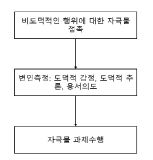
Purpose Drawing on Socioemotional Selectivity Theory, the present research aims to investigate how sport consumers’ moral reasoning strategies and forgiveness intent toward a sport organization’s misconduct depending on the consumers’ different time perspectives(expansive vs. limited). Methods An experimental study (total n = 129; Baby Boomer generation = 62, generation MZ = 67) was conducted by utilizing a fictitious scenario depicting a sport organization’s misconduct. The proposed hypotheses were tested by conducting T-test, correction analysis, and multiple regression analysis using SPSS 21.0. Results There were significant differences in moral reasoning and forgiveness based on different time perspective. Baby Boomer(MZ) group showed higher(lower) levels of moral rationalization, moral decoupling, and intent of forgiveness compared to MZ(Baby Bommer) group, while showing lower(higher) level of moral coupling. A result also revealed that negative moral emotions had moderating effect between a limited time perspective and moral coupling among MZ participants. Conclusion The results of this study indicated that sport consumers’ time perspective has a predictive function on moral reasoning strategies. Thus, it is necessary for sport organizations to establish strategies focusing on the consumers’ time perspective to effectively respond to an unexpected crisis.

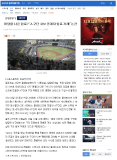
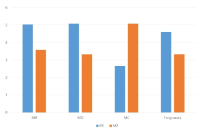
Purpose The purpose of this study is to identify why and how sports docudrama is one of the unique objects for the scholarship of sport history. Methods As a review study, this paper pays attention to, collects, and critically reviews three dimensions of the literatures: 1) ones that claim and argue for a-historicity of historical sport films by pointing out how they are full of actual errors, mistakes, and misrepresentation, and why they are problematic, 2) ones that belong to so called ‘the study of docudrama’ with specific focus on the themes of definition, mode of representation, and cultural memory, and 3) ones that attempt to envision the possibility of visual history or filmic history from the perspective of historiography and some other epistemological issues. Results Following the above review method, the result of this paper is also divided into three parts: 1) how sport historians respond to and criticize historical sport films from the sense based on the modern historiography, 2) how a group of historians argue why historical sport films can be one of the promising way of doing histories, 3) review of the study of docudrama, focusing on what is docudrama, why it can be a mode of representation, and how it resonates to cultural memory. Conclusions As a conclusion, this paper argues that a more collectively academic concerns to sport docudrama paves way for developing and envisioning the scholarship of sport history.

Purpose This research was to empirically analyze the relationship between a commercial sports center customer-perceived employees' emotion labor (deep acting, surface acting) and sports center emotion, service quality & relationship retention through structural equation model analysis. Methods For this purpose, this study set 270 members at the two commercial sports centers(facilities equipped with more than 3 events) located in Suwon as the research subjects. In an effort to verify the proposed structural model, this study used SPSSWIN Ver. 21.0 and AMOS 18.0. Results first, this study found that deep acting had a positive effect on positive emotion. Second, it was found that surface acting had a positive effect on negative emotion. Third, deep acting was found to have a positive effect on service quality. Fourth, surface acting was found to have a negative effect on service quality. Fifth, the results showed that positive emotion didn't have a positive effect on relationship retention. Sixth, negative emotion was found to have a negative effect on relationship retention. Seventh, service quality was found to have a positive effect on relationship retention. Conclusion This findings indicate that the management of emotional labor is critical from the aspects of personnel management in sport centers.

The recent increases in international efforts for designing and implementing initiatives and programs about 'development though sport' have accompanied the remarkable growth of the 'sport for development and peace'(SDP) sector. This global prevalence of SDP and the resulting augmentation of its social significance have rendered a growing scholarly attention to SDP in the sociology of sport. Moreover, a grounding rationale for SDP initiatives to enhance positive individual and social changes through sport has also offered an interesting research area for the sociology of sport. This paper aims to review sport sociology literature about SDP. Major findings include a set of descriptive reports about the institutionalization of SDP and critical/reflective approaches to SDP's outcomes and limitations. It is noted that the institutionalization of SDP consists of ideological and policy endeavors, SDP organizations and institutions, and classifications of SDP project types. Despite of positive outcomes resulted from SDP programs, it has been highlighted that the ongoing issues and limitations of SDP include ambiguities of development concept, the Global North hegemony, unilateral top-down program management, and the inherent complexity and lack of program monitoring/evaluation.
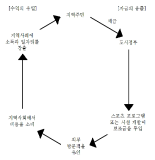
A number of global cities and local cities facilitate local economies and development by utilizing sports. However, their strategy is likely to be a short-term and one-time policy, which does not continuously strengthen their development. Therefore, the use of sports needs to be considered as more specific and longer term strategies for local development. This study examines the concept and role of sports city focused on cases of overseas sports cities, and successful and ideal cases of background and features of sports cities were analyzed to promote and lead the direction of improvement of sports cities in Korea. Consequently, strengthening a city’s sport capability and connecting it to local development need to be met to become a city into a successful sport city. To do so, it should premise recognition that sports cannot be treated separately from other urban policy area and it needs to invest in sports facilities, hosting sports events and competitions, and sports clubs based on the recognition for the importance of sports. Moreover, it needs a marketing strategy for branding and differentiation through sports of a city’s expertise. Finally, to make sports act as a catalyst to strengthen the process of an integrated city’s competitiveness, it requires a local government’s strong leadership and organization capacity of stakeholders.

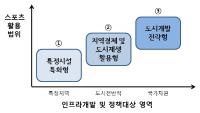






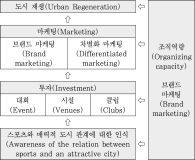
The purpose of this paper is to map how sport sociologists and sport historians have engaged in the study of race and/in sport. Focusing on scholars with two communities of the North American Society for Sport Sociology & Sport History, it investigates themes, historical/sociological philosophy, theoretical/methodological issues that underpin their works. To be more specific, mainly four types of research are detailed: 1) popular narratives that mostly celebrate black athletes’ success in sport, 2) so-called the early academic works that highlight the positive role of sport in advancing the issue of race in relation to social justice, unification, equality, and so on, 3) a group of researches informed by the positivism, which attempt to discover, investigate, identify racially problematic phenomena, incidents, policies, or incidents and explain why they happen, what makes them problematic, and how to solve such matters, and 4) critical paradigm that orients cultural studies based researches that attempt to explore the relationship between sport and race with focus on interpretive, theoretical, and reflective approaches. In conclusion, it is discussed why I pay attention to the critical paradigm, what it’s emergence means to the sporting academy, and in what ways we can embrace it into the Korean sporting academy.
As an attempt to think about the popularization of Korean sport history, this paper discusses three main things. First, it will be introduced what public/popular history is, how it has been developed, and why it is important to history as an academic discipline. Second, it will be summarized how sport historian embraced public/popular history into their practices in terms of what theoretical, critical, and methodological aspects they have focused. Third, I will discus why public/popular history is useful in the ways in which Korean sport history envisions its popularization in Korean society. To be more specific, I highlight two ideas: an insight for understanding sport history as a process and sport historiansʼ role of critic. Based upon these two, I will argue that Korean sport historians might need to actively embrace practices of public/popular history into their studies of the Korean sporting past.